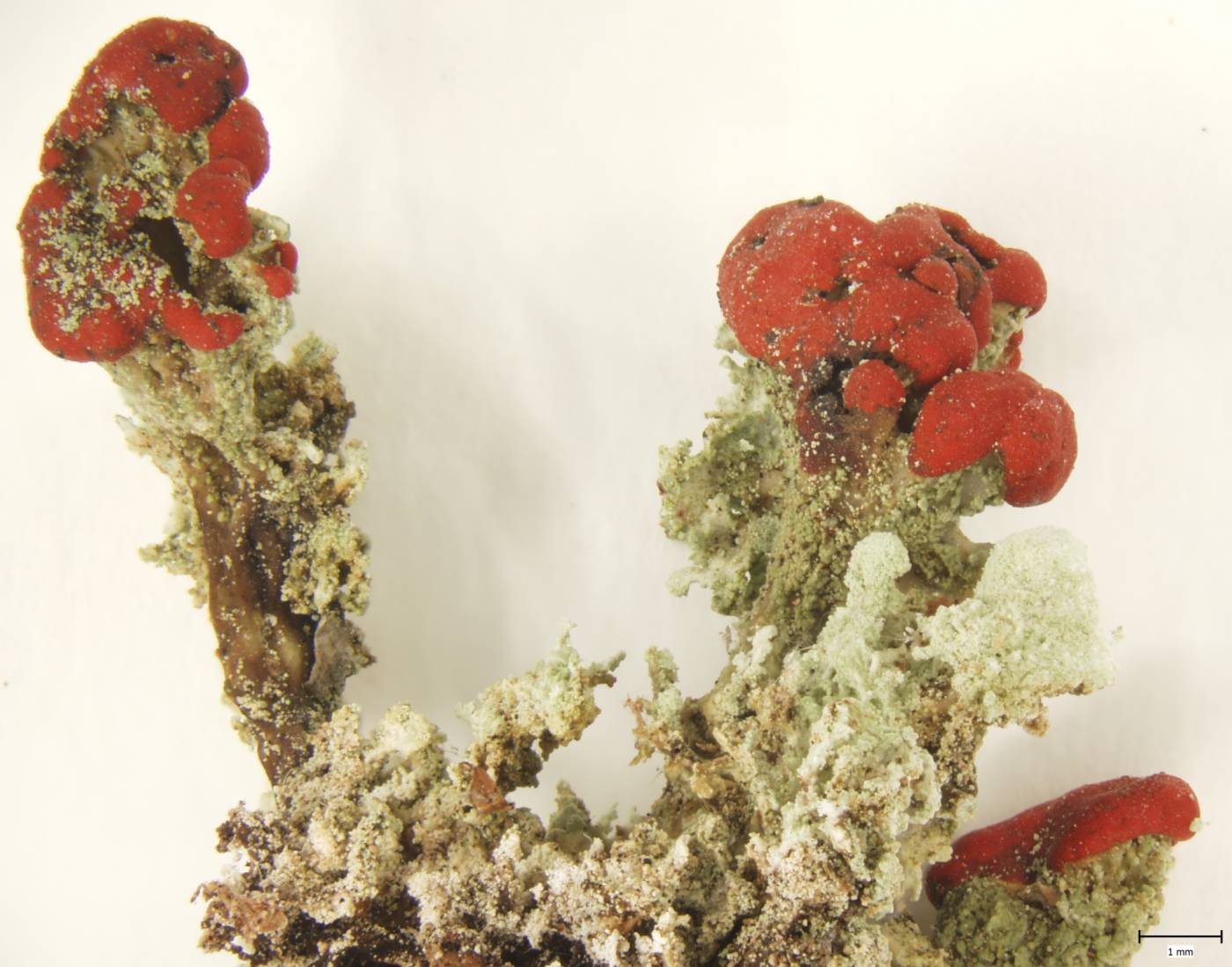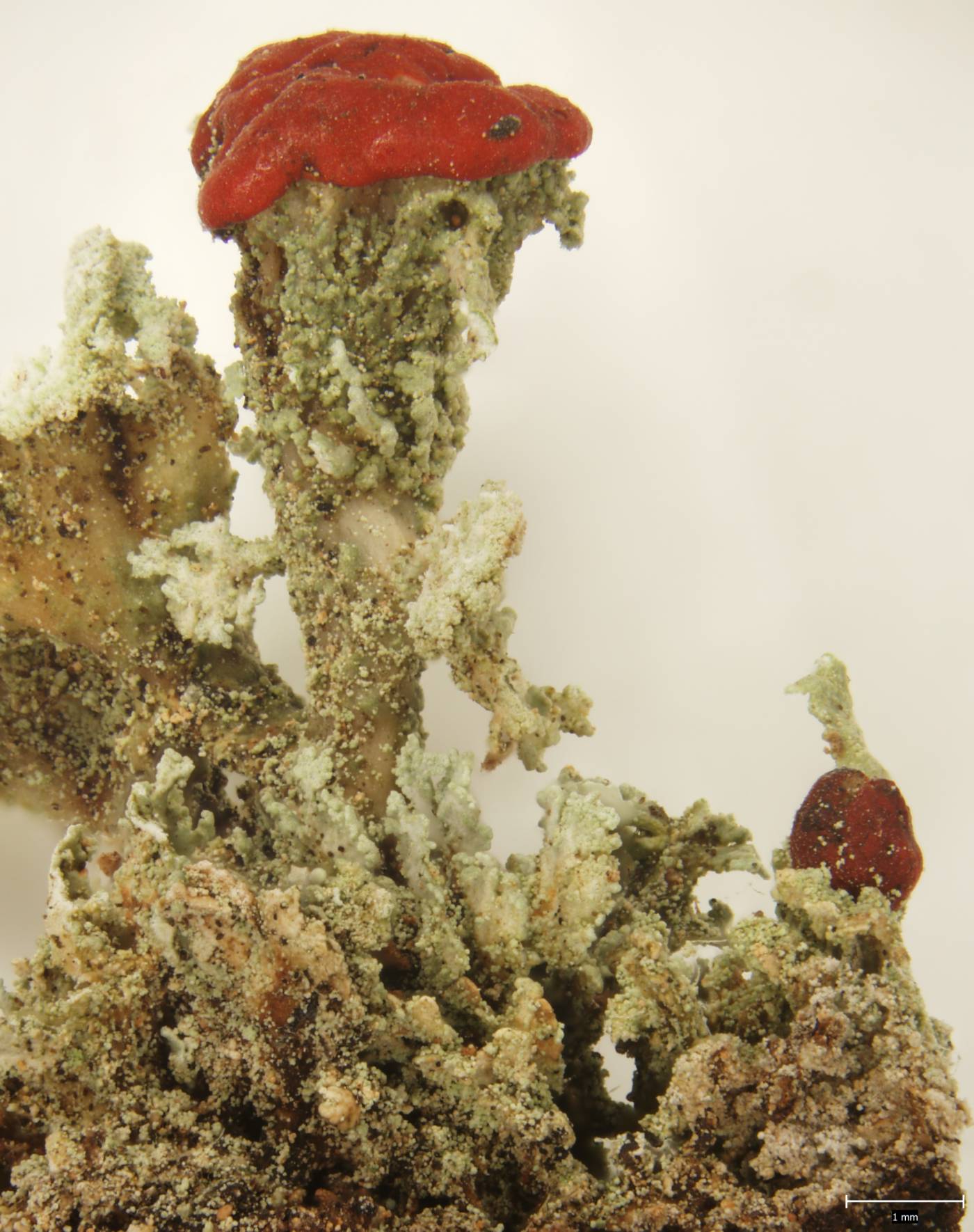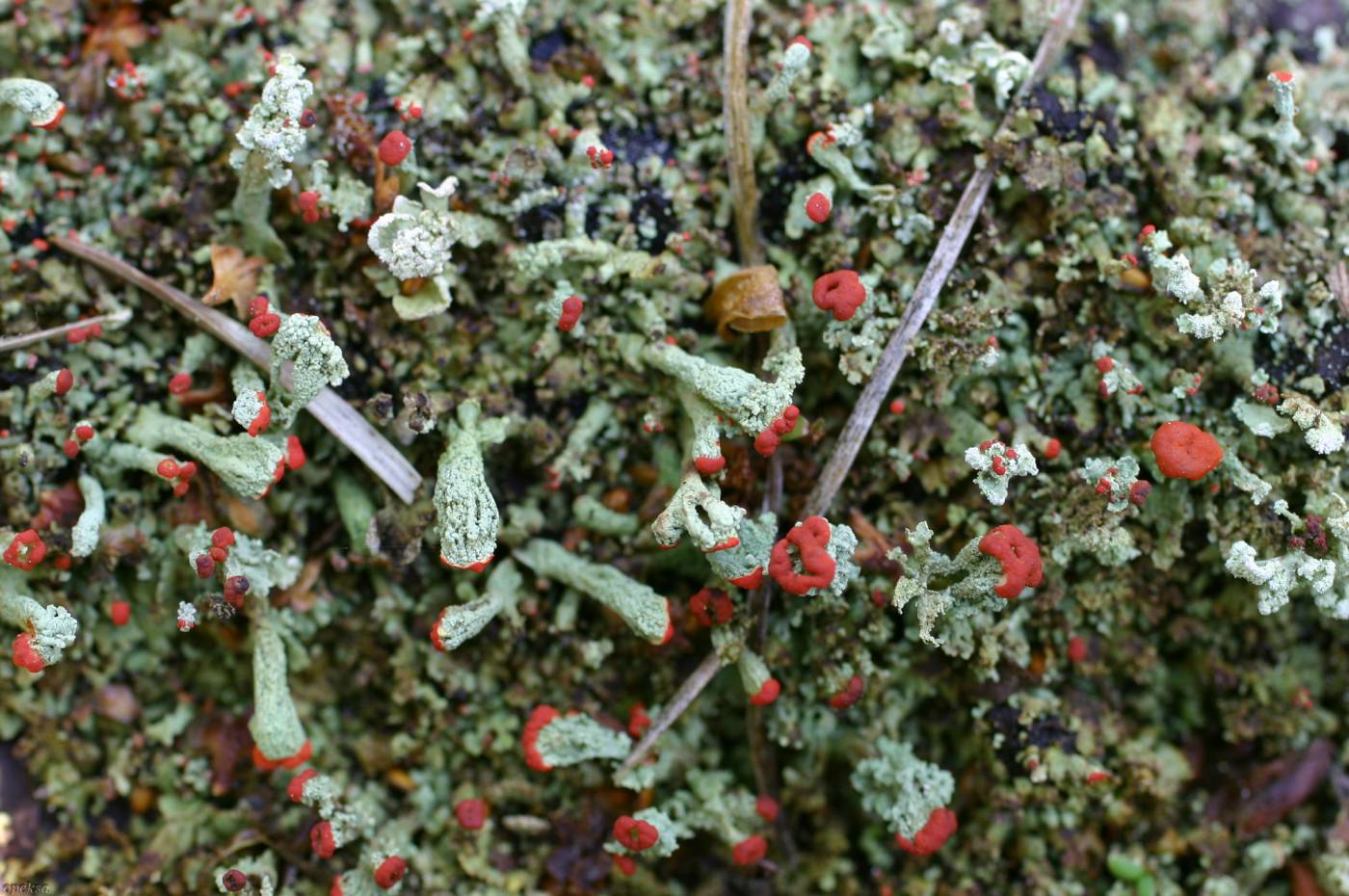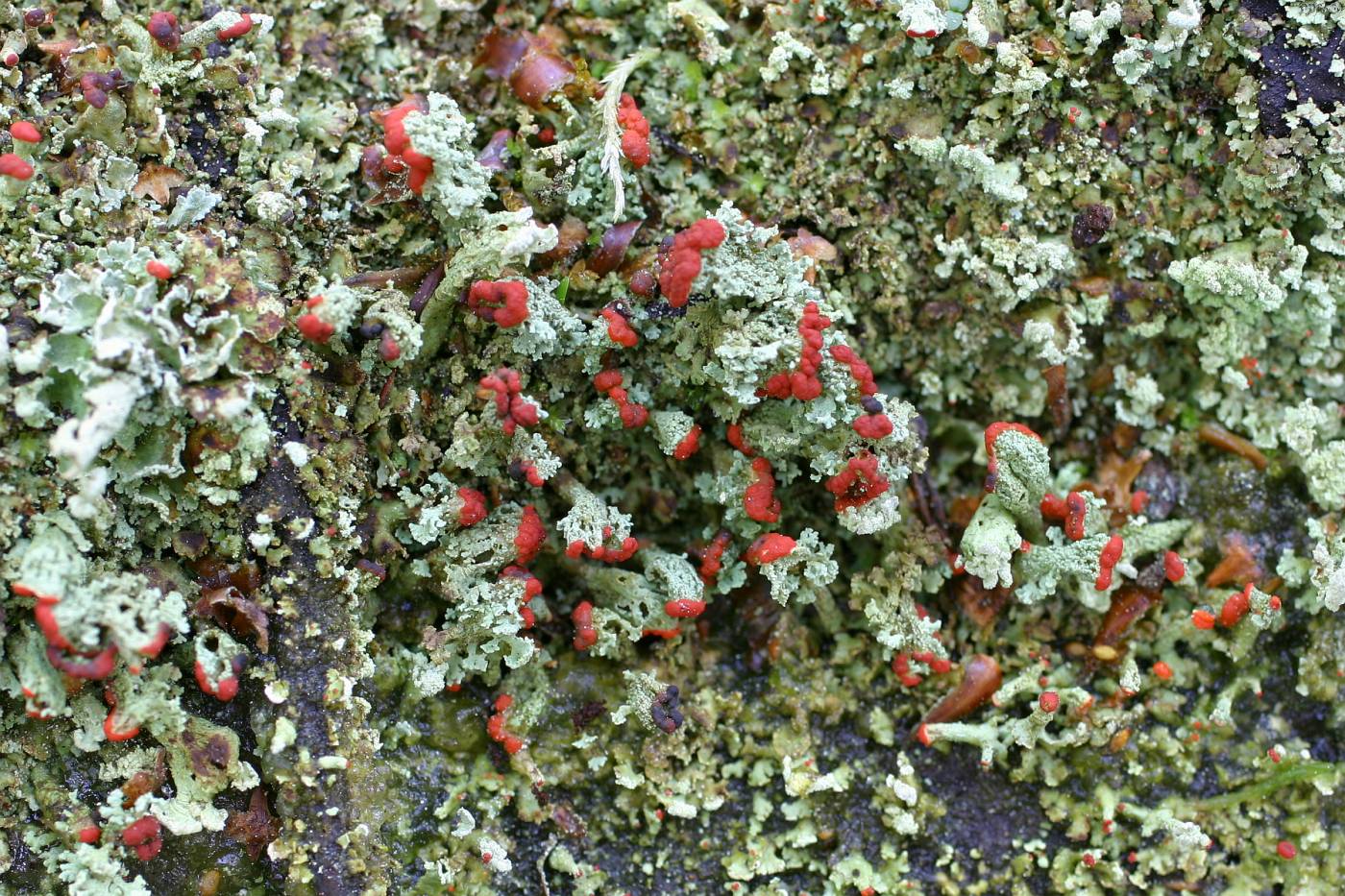A species with dominant primary thallus composed of yellow-green squamules with densely sorediate margins. It is often sterile but sometimes forms richly fertile colonies with red fruiting bodies on very short apically widened (club-shaped) and often branched podetia.
C. incrassata has a suboceanic distribution area and is quite rare in central Europe. Suza (1938) considered it a characteristic species of transitional peat bogs, but its ecological amplitude and distribution range in the Czech Republic have turned out to be much greater in the last decades. The lichen is associated with humid habitats and specific, occasionally disturbed substrates, such as humid and slowly decaying wood, exposed peat, compact sandy soil and sandstone. It may also be found on tree bases and bryophytes. In the Czech Republic, the species occurs exclusively in natural habitats, such as peatbogs at lower and middle elevations. It is quite rare but locally abundant in the country, e.g., in the Třeboň region. Recently, it has been recorded at several peatbogs in the western part of the Czech Republic. Very rich populations have also been found at bases of pine trees in a relic sand pine forest of the České Švýcarsko National Park (Peksa 2009), where it also occurs directly on sandstone. In several ravines, C. incrassata is among dominant species on vertical sandstone rocks. Its distribution area and ecological requirements in the Czech Republic are thus similar to Rhododendron tomentosum. The latter also associates with two different stand types; transitional peat bogs and sandstones. The species has also been surprisingly found in riparian forests near the Morava-Dyje confluence where it grows on slowly decaying wood of giant lying oak trunks. As already noted by Suza (1938), the species does not occur at high elevations in the Czech Republic and is absent from typical mountain raised bogs. Its highest records are from Vltavský luh in the Šumava Mts, Slavkovský les Mts and Rejvíz in the Hrubý Jeseník Mts.
Cladonia incrassata forms several chemotypes. Specimens containing grayanic acid, only known from coastal areas in Germany and Poland so far, are considered a separate taxon Cladonia aff. anitae (Tønsberg 1995, Kukwa 2005).
Literature: Suza J. (1938): Einige wichtige Flechtenarten der Hochmoore im Böhmischen Massiv und in den Westkarpathen. – Věstník Královské české společnosti nauk 1937/5: 1–33. Peksa O. (2009): Species composition of lichens in surface crusts on natural substrata. – In: Neustupa J. et al., The biological soil crusts in Central European ecosystems, with special reference to taxonomic structure and ecology of the surface crusts at Czech ore-waste and ash-slag sedimentation industrial basins. – Novitates Botanicae Universitatis Carolinae 19/2008: 19–21. Tønsberg T. (1995): Cladonia incrassata new to Norway, and the problem of C. anitae in Europe. – Graphis Scripta 7: 61–65. Kukwa M. (2005): The lichen species Cladonia incrassata (Lecanorales, Ascomycota lichenisati) in Poland, and notes on C. anitae. – Polish Botanical Journal 50: 69–73. Malíček J., Bouda F., Kocourková J., Palice Z. & Peksa O. (2011): Zajímavé nálezy vzácných a přehlížených dutohlávek v České republice. – Bryonora 48: 34–50.
taxonomic classification:Ascomycota → Lecanoromycetes → Lecanorales → Cladoniaceae → Cladonia
Red List (Liška & Palice 2010):CR – critically endangered
Red List (Malíček 2023):C3 – endangered
Occurrence in the Czech Republic
All records: 39, confirmed 32. One click on a selected square displays particular record(s), including their source(s).




